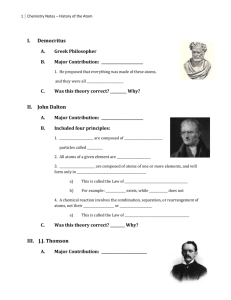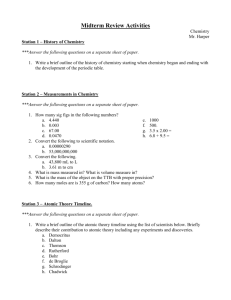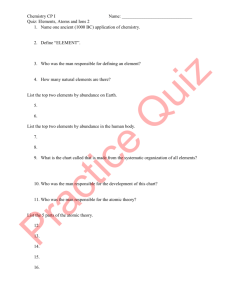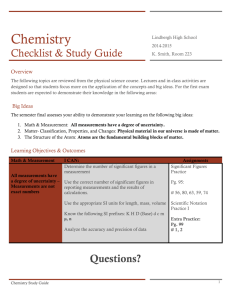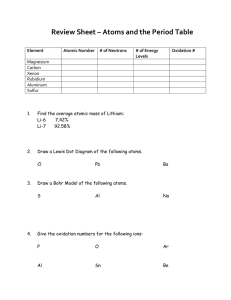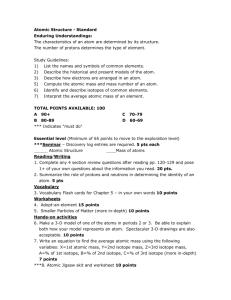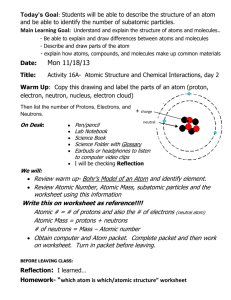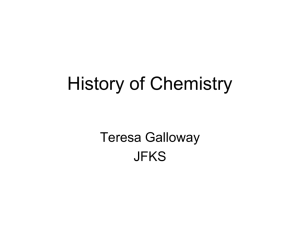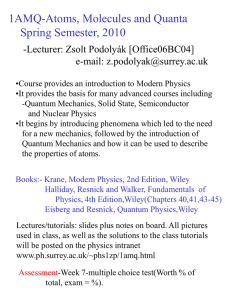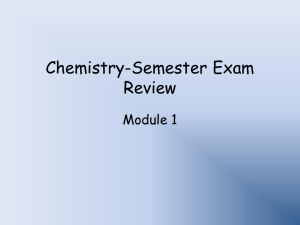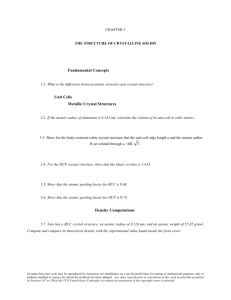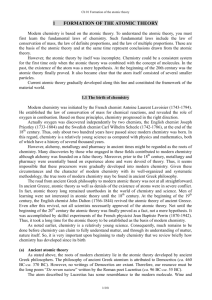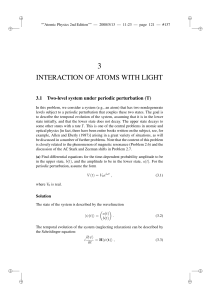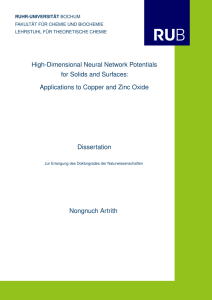Benchmark 1 GETTING TO KNOW CHEMISTRY AND ATOMIC
advertisement
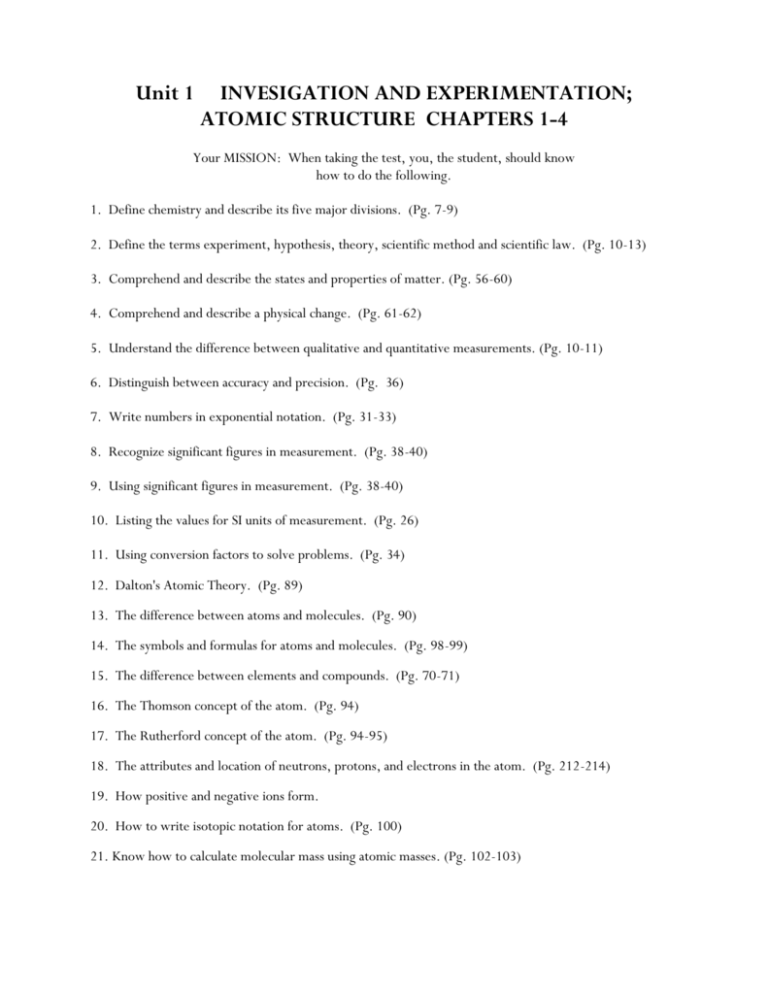
Unit 1 INVESIGATION AND EXPERIMENTATION; ATOMIC STRUCTURE CHAPTERS 1-4 Your MISSION: When taking the test, you, the student, should know how to do the following. 1. Define chemistry and describe its five major divisions. (Pg. 7-9) 2. Define the terms experiment, hypothesis, theory, scientific method and scientific law. (Pg. 10-13) 3. Comprehend and describe the states and properties of matter. (Pg. 56-60) 4. Comprehend and describe a physical change. (Pg. 61-62) 5. Understand the difference between qualitative and quantitative measurements. (Pg. 10-11) 6. Distinguish between accuracy and precision. (Pg. 36) 7. Write numbers in exponential notation. (Pg. 31-33) 8. Recognize significant figures in measurement. (Pg. 38-40) 9. Using significant figures in measurement. (Pg. 38-40) 10. Listing the values for SI units of measurement. (Pg. 26) 11. Using conversion factors to solve problems. (Pg. 34) 12. Dalton's Atomic Theory. (Pg. 89) 13. The difference between atoms and molecules. (Pg. 90) 14. The symbols and formulas for atoms and molecules. (Pg. 98-99) 15. The difference between elements and compounds. (Pg. 70-71) 16. The Thomson concept of the atom. (Pg. 94) 17. The Rutherford concept of the atom. (Pg. 94-95) 18. The attributes and location of neutrons, protons, and electrons in the atom. (Pg. 212-214) 19. How positive and negative ions form. 20. How to write isotopic notation for atoms. (Pg. 100) 21. Know how to calculate molecular mass using atomic masses. (Pg. 102-103) Unit 1 Homework 1. 2. 3. 4. 5. 6. 7. 8. Graphing Assignment Worksheet Metrics: pg. 871 # 1, 2, 6(a-c), 7; pg. 51 #80 Sig Figs #1: pg. 872 # 11, 14, 15 Sig Fig #2: pg. 872 # 12, 13 and pg. 51 # 83-85, pg. 52 # 93 (all but c) Scientific Notation: pg. 871 # 3-5 Symbols and Mass Worksheet Isotopes: pg. 113 # 72 and pg. 872-873 (ch4) # 1-6 Review: pg. 23 # 1-7, pg. 53 # 1-9, pg. 85 # 4-7, 9-10, pg. 112 # 64 and pg. 114 # 90-93 ** Review practice problems in chapter 1-4!! Answers in Appendix D** Unit 1 Experiments 1. Density of Solids 2. Density of Liquids 3. Counting by Particles Lab POWER WORDS Chemistry Scientific Method Observation Hypothesis Theory Mass Volume Accuracy Precision Significant figures Density Qualitative measurement Quantitative measurement Matter Solid Liquid Gas Physical change Chemical change Law of conservation of matter Element Compound Atom Molecule Pure substance Mixture Heterogeneous Homogenous Solution Proton Neutron Amu Atomic number Ion Isotope Mass number Cation Anion





